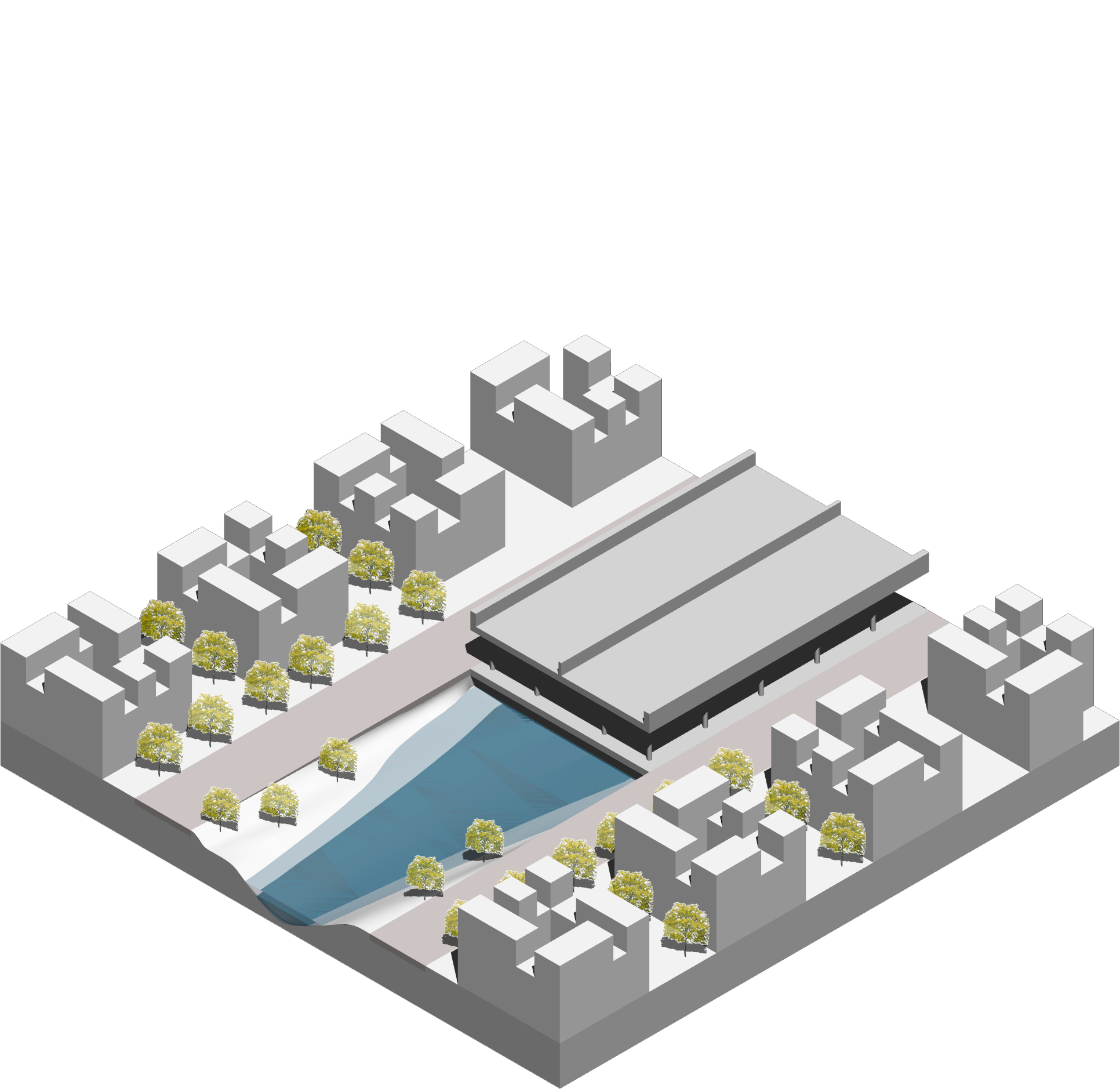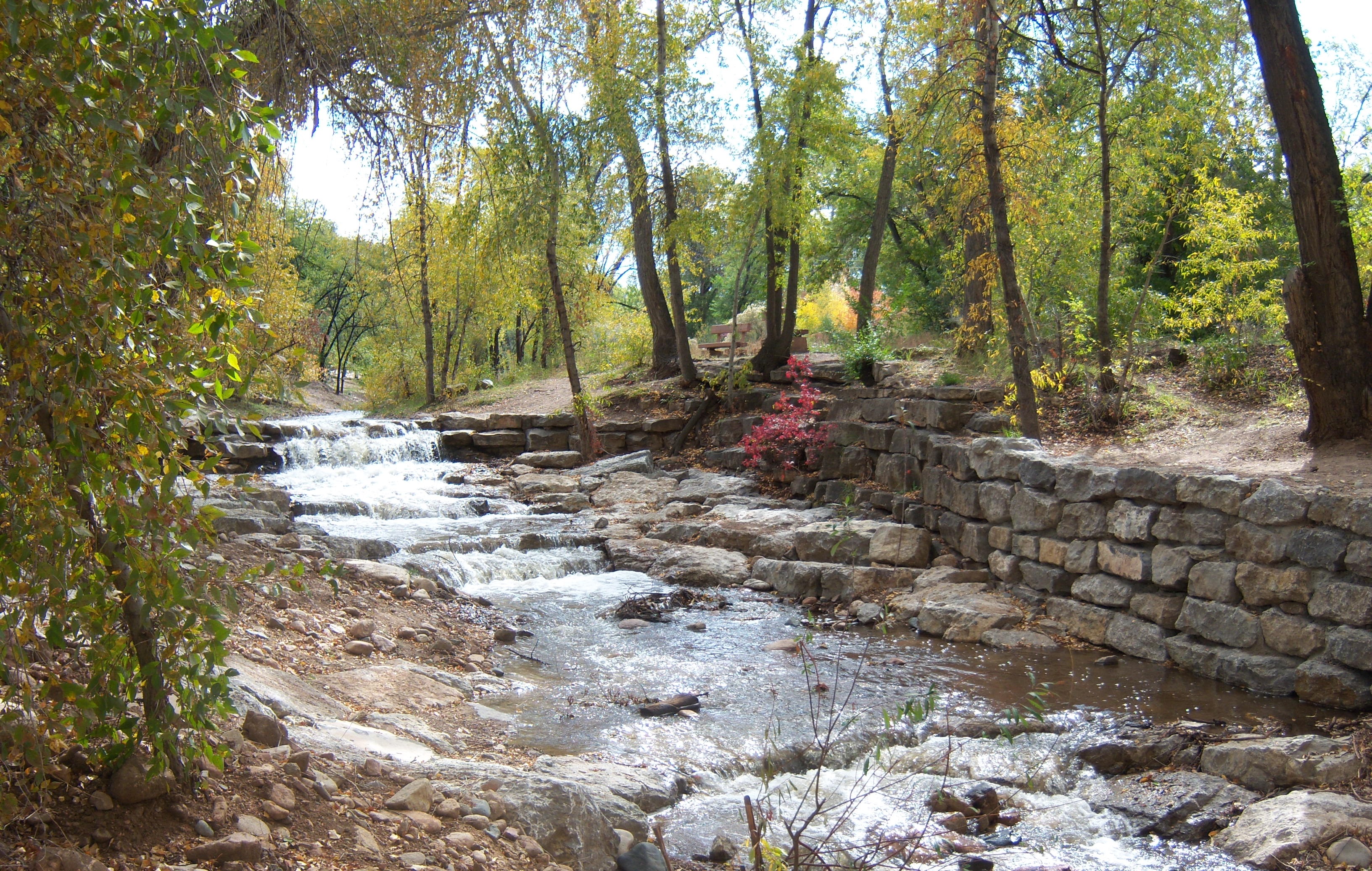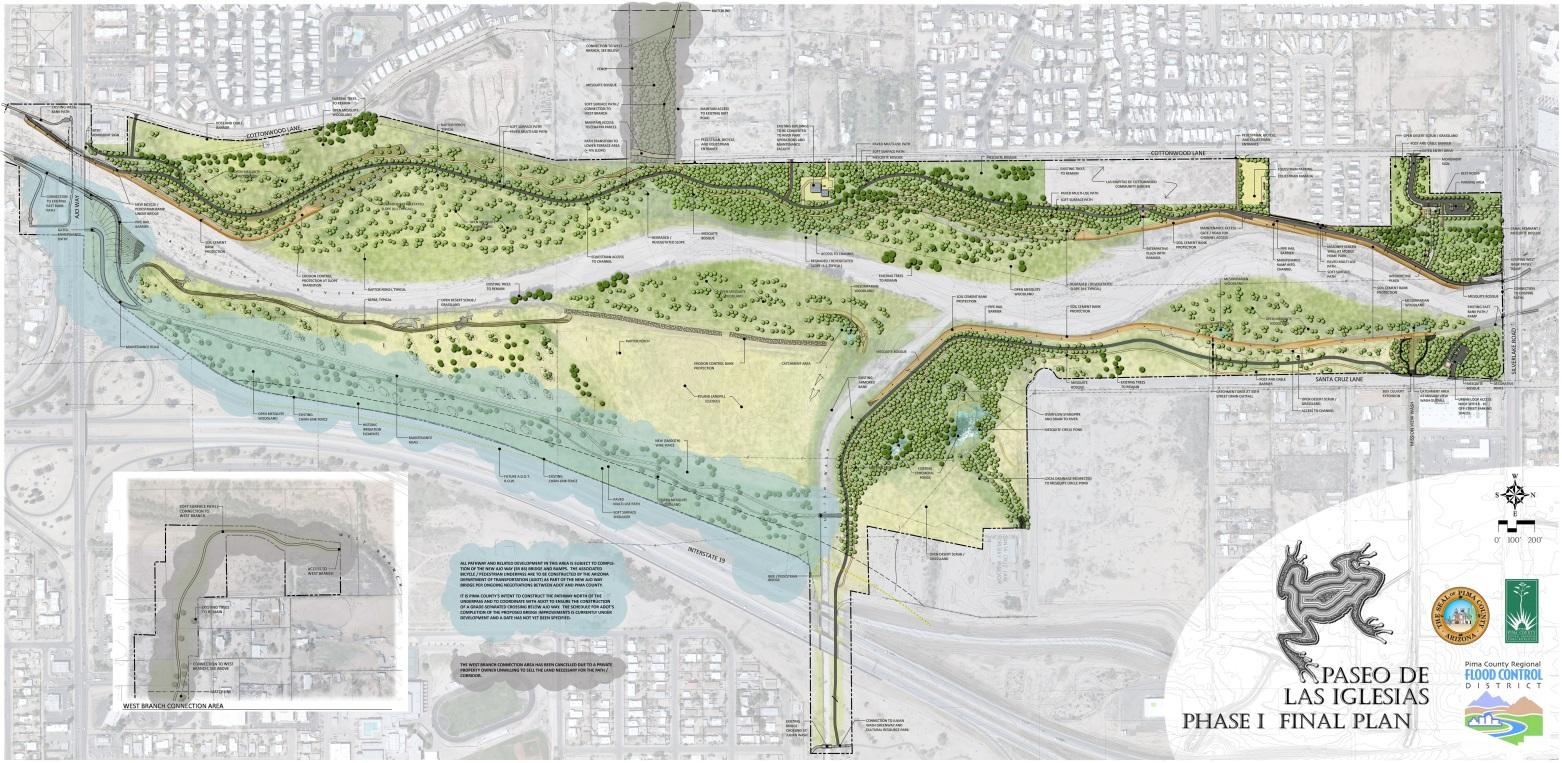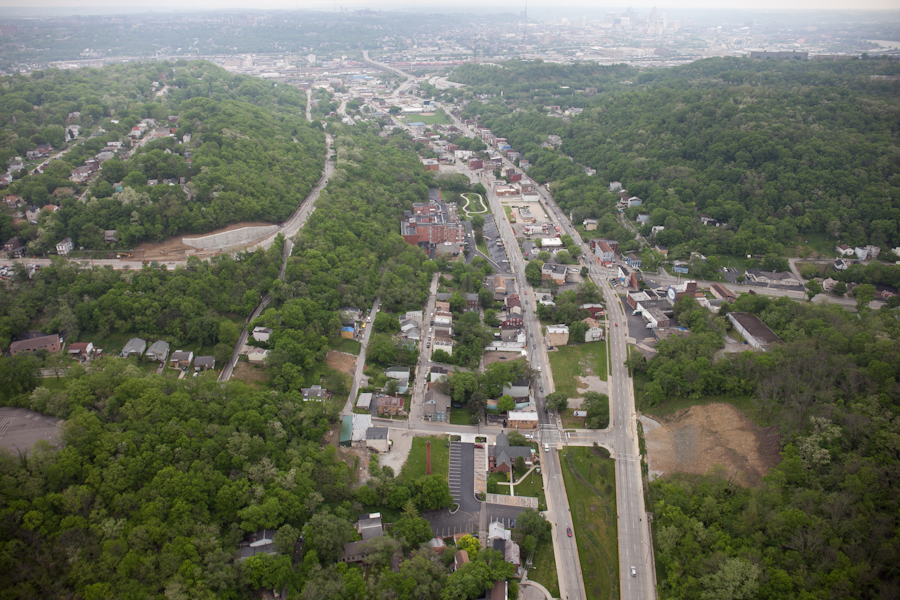Daylighting Rivers and Streams
Daylighting rivers or streams is the process of removing obstructions (such as concrete or pavement) which are covering a river, creek, or drainage way and restoring them to their previous condition. As urban areas are developed with roadways, parking lots, and buildings, waterways are sometimes redirected, covered in impervious material, and/or buried in pipes, culverts, or a drainage system to create a more buildable surface area or in an attempt to protect properties from flooding. Unfortunately, burying or covering rivers and streams has the unintended consequences of increasing nutrient pollution, degrading habitats, and increasing downstream flooding. Daylighting removes these artificial impediments and reestablishes rivers and streams within their original channels where possible or, where development is in the way, creates a new channel for the waterway. The resulting restored river or stream provides stormwater benefits as well as numerous aesthetic, economic, and environmental co-benefits.
Hazard Mitigation
The process of daylighting a river or stream will increase the area available for water to pass through the channel, increasing storage capacity which reduces peak flows and increases flow duration. This helps to reduce downstream flooding. Localized flooding may also be reduced by eliminating choke points where streams were forced into underground channels.

Siting Considerations
A primary consideration in any potential daylighting project is whether or not there is sufficient space to build out the necessary channel. Successful projects require ample width to allow for a natural flow path and gentle, stable slopes, which will almost always require a significantly wider area than the area occupied by a buried stream.
Extremely dense urban areas may be highly constrained by existing buildings, roadways, and buried utility lines for an effective channel to be constructed. Although built infrastructure can always be moved, the costs to do so may be prohibitive, especially in urban areas with very high land values. For this reason, daylighting in dense urban areas is often undertaken as part of a larger economic revitalization effort that can capitalize on the new environmental amenities created by the daylighted stream.
For any daylighting project, it is essential to understand the underlying soil types and channel material (slit, clay, sand, gravel, etc.) to ensure that the project is properly designed and will function as intended. Existing conditions will also greatly impact project costs.
Costs
The daylighting process is typically technically complex and labor-intensive, requiring the removal of culverts or other impediments, as well as excavation, and extensive plantings. Technical expertise is required in terms of engineering, earthmoving, and landscape design. Although labor costs may be reduced by using in-kind donations and volunteer labor for much of the work, the necessary heavy equipment and technical expertise required means that these projects often cost upwards of $100,000. (A 2000 study published by the Rocky Mountain Institute estimated a general rule of thumb of $1,000 per linear foot of daylighted stream.) However, daylighting projects may be eligible for Clear Water Act 319 funding, brownfield programs, FEMA Hazard Mitigation Assistance, and state clean water/drinking water revolving funds.

Co-Benefits of the Strategy
When rivers and streams are unearthed, they transform from liabilities into assets. An attractive stream creates a neighborhood amenity that provides opportunities for recreation and physical activity, increases property values, and can trigger revitalization within the surrounding area.
Open streams, especially small streams, are highly effective in removing pollution. They encourage the transformation of excessive nutrients such as nitrogen and phosphorus, which improves habitats for fish and other wildlife (which leads to more additional recreational opportunities). Humans also benefit directly from higher drinking water quality.
While open rivers and streams provide direct floodwater storage, they also contribute to more effective stormwater management by diverting stormwater from the sewage system. Long-term costs are also less than those needed to repair and maintain culverts and other storm structures, resulting in fiscal benefits for local government.
Maintenance Considerations
Daylighting projects require significant monitoring and maintenance in the first few years to ensure that the channel and bank are stable and the plantings are established. Multiple plantings may be necessary, therefore it is important to budget for additional plants, maintenance personnel, and supplies for at least two years after installation. Once the plantings are established, however, an open stream will require far less ongoing maintenance than a culvert or other gray infrastructure.

Similar or Complementary Solutions
Daylighting rivers may be a part of a larger flood management strategy focused on restoring a more natural flow to a riverine system that includes open space acquisition, floodplain restoration, and even creating floodwater detention areas. Additionally, moving people out of harms way may either be a necessary step in the daylighting process or an additional step in the broader flood management strategy associated with a daylighted river.
Additional Considerations
Daylight rivers may involve coordination with multiple public agencies depending on who will own the new waterway and whether private property is affected or not as a result of daylighting. Environmental regulations, planning procedures and zoning requirements will need to be considered where applicable.
Additional Resources
Daylighting Streams: Breathing Life into Urban Streams and Communities report by American Rivers.
The Rocky Mountain Institute compiled a report on Daylighting Rivers and Streams, including a number of cases studies drawn from across the country.



